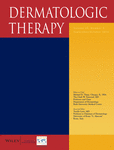Photodynamic therapy in lupus miliaris disseminatus faciei's scars
Disclosure Statement: No funding source supported the work.
Abstract
Lupus miliaris disseminatus faciei is an uncommon granulomatous inflammatory disease, characterized by multiple, monomorphic, reddish translucent papules and nodules, mainly located on the face. Several therapeutic options have been employed with variable results, leaving residual disfiguring scars. On this topic, we report a case of significant improvement of red-atrophic scars in a 54-year-old male after three sessions of photodynamic therapy with 10% aminolevulinic acid. Owing to the high safety profile and the excellent cosmetic result, photodynamic therapy may be considered a useful tool to both prevent and treat undesirable scarring.




